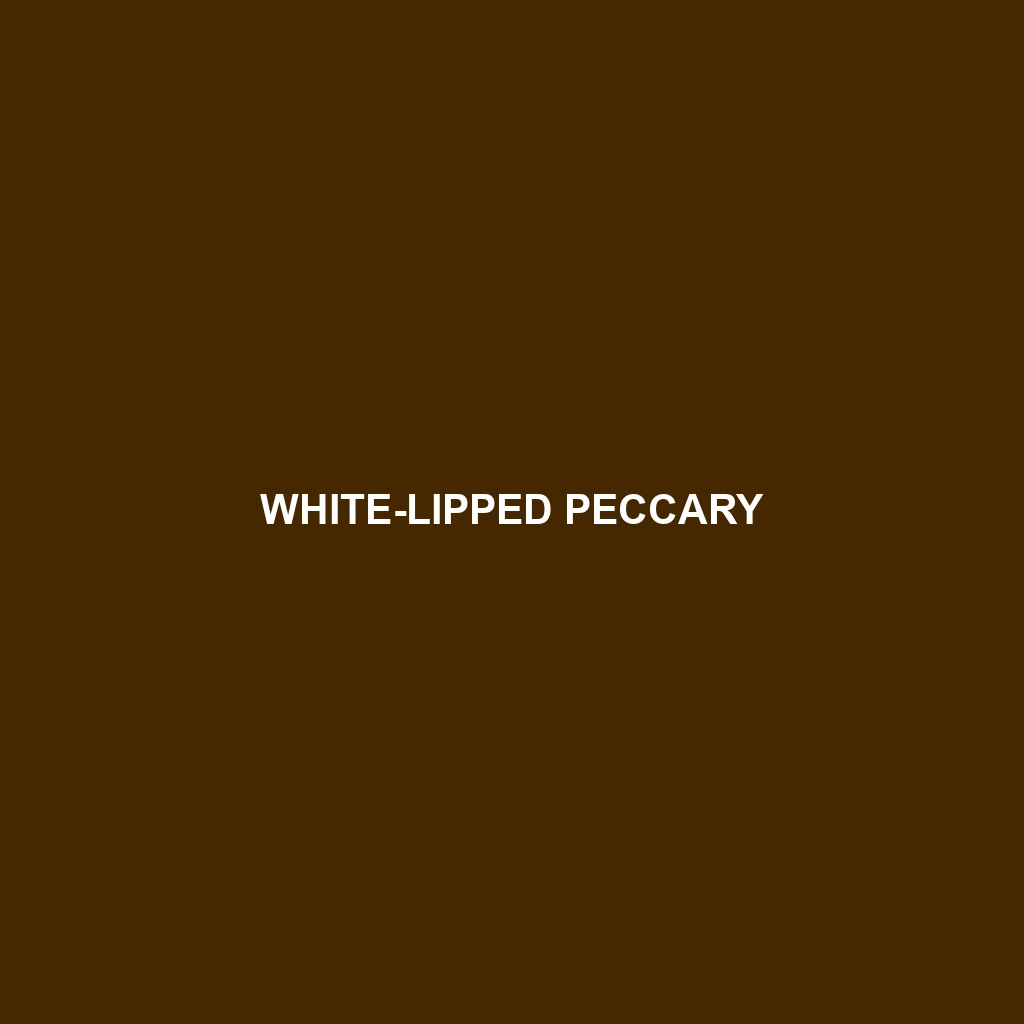Chacoan Peccary (Catagonus wagneri)
Common Name: Chacoan Peccary
Scientific Name: Catagonus wagneri
Habitat
The Chacoan Peccary is primarily found in the Gran Chaco region of South America, which spans parts of Argentina, Paraguay, and Bolivia. This unique habitat is characterized by a mix of dry forest, scrubland, and open grasslands. The Chaco, particularly known for its tropical and subtropical climates, offers a diverse array of plant life that supports the ecology of the area.
Physical Characteristics
Chacoan Peccaries are medium-sized mammals, typically weighing between 20 to 30 kilograms and measuring about 90 to 100 centimeters in length. They possess a distinctive dark brown to grayish coat with a bristly texture, which is particularly noticeable on their backs. One of the most striking features is their prominent tusks, which can grow up to 15 centimeters long and are used for self-defense and foraging. Their robust bodies and short legs make them well-adapted to their environment.
Behavior
Chacoan Peccaries are social animals that usually live in groups of up to 10 individuals. They are known for their strong olfactory senses, which they utilize to communicate and locate food. These peccaries are primarily active during the day (diurnal), and they exhibit a variety of behaviors, including wallowing in mud to regulate their body temperature and to keep insects at bay.
Diet
The Chacoan Peccary is an herbivore, and its diet mainly consists of fruits, seeds, leaves, and roots. They are known to consume a variety of plant materials, which are crucial for their digestive systems, given their specialized gut adapted to breaking down fibrous plants. Additionally, they help disperse seeds through their droppings, contributing to their ecosystem’s health.
Reproduction
Chacoan Peccaries breed throughout the year, although peak breeding seasons can vary based on environmental conditions. The gestation period lasts approximately five months, after which a single offspring is typically born. Young peccaries are nursed for several months, and maternal care is provided by females in the group, showcasing a social structure that supports offspring development.
Conservation Status
The Chacoan Peccary is currently classified as endangered due to habitat loss, hunting, and competition with livestock. Conservation efforts are underway, but ongoing threats from deforestation and agricultural expansion continue to pose significant risks to their survival.
Interesting Facts
Despite resembling other peccary species, the Chacoan Peccary is notably unique due to its genetic lineage and the specific ecosystems it occupies. It has a highly developed sense of smell that is crucial for finding food and avoiding predators. This species was once thought to be extinct but was rediscovered in the 1970s, making its conservation all the more significant.
Role in Ecosystem
As a key herbivore, the Chacoan Peccary plays an essential role in the ecosystem by aiding in seed dispersion and maintaining plant diversity within its habitat. Their foraging habits contribute to soil health and composition, while their presence provides food for predators, thus supporting the broader ecological community.
